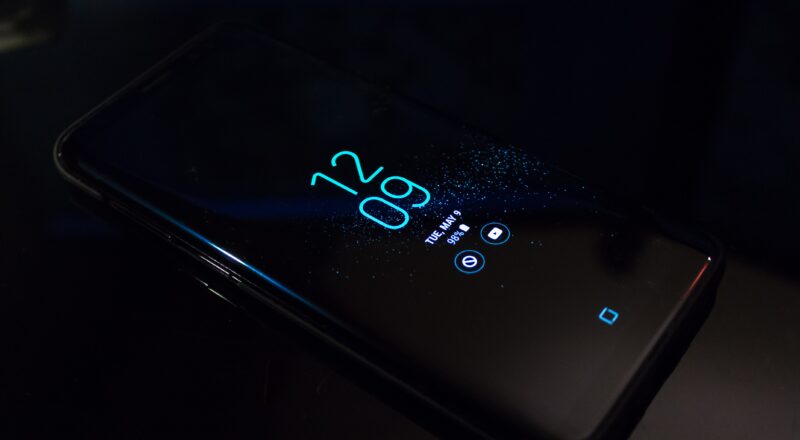Poco M4 Pro 5G: A Step Toward Rebranding POCO
The POCO name has long been synonymous with reasonably priced intermediate devices capable of running even the most demanding 3D games. In addition, unfiltered electricity was made available at wallet-friendly prices. In sum, for better or worse, a POCO phone was seen as the gaming phone for the daily tech head.
The business hopes to prove its ability to develop innovative technology beyond just sheer power with the POCO M4 Pro 5G. As a matter of fact, the average computer nerd’s day consists of more than just playing video games. But, is it effective?
The 4GB + 64GB variant of the POCO M4 Pro 5G costs Rs. 14,999, the 6GB + 128GB model costs Rs. 16,999, and the 8GB + 128GB model is priced at Rs. 18,999. It is available in Power Black, Cool Blue, and POCO Yellow. Comparatively, this is less expensive than the Redmi Note 11T 5G. In February 2022, the phone went on sale at Flipkart.
Design
The POCO M3’s huge glass pane, which extends over the phone’s camera housing, presented a daring new design approach. The M4 Pro has a similar layout but with a few key differences: the rear panel is now made of the same matte finish as the rest of the phone, and there is no glass window.
The POCO M4 Pro has a striking design on the rear, and the matte coating makes it comfortable to grip. In addition, POCO opted for a two-tone design, with the Power Black model being less obviously two-toned than the POCO Yellow and Cool Blue versions.
The phone’s plastic back has gentle curves at the point where it joins the middle frame, and the matte finish makes it comfortable to handle. Additionally, this helps conceal fingerprints.
The M4 Pro features two camera modules (a 50MP main lens and an 8MP wide-angle), but POCO opted for a housing that can support five lenses, making for an intriguing design for the back camera island. In addition, the housing includes an LED flash. However, the cutouts at the base are purely cosmetic, with a red recording dot and the words “AI” written in one.
The M4 Pro is not a pocket-sized smartphone. Instead, it weighs just 195 grams because of its plastic construction and measures 163.6 by 75 by 8.8 millimeters (mm), making it nearly the same size as the Galaxy S21 Ultra. You probably can’t operate this phone with one hand, but the rounded edges and matte finish on the rear make it a lot more manageable than it would otherwise be.
Display
The POCO M4 Pro has the same high-quality LCD screen as Xiaomi’s 2022 cheap phone, continuing the company’s trend of using LCD displays instead of AMOLED panels on its budget phones. A full high-definition LCD measuring 6.6 inches in diagonal size and sporting a 2400 x 1080 resolution and 90 Hz refresh rate is provided. Calibration and color balance is excellent right out of the box on this screen.
Colors pop and transition smoothly on the 90Hz LCD screen. The contrast is excellent, and the brightness is fine as well; the ambient light sensor does a nice job of increasing or decreasing the brightness as needed. There are three options available: Normal, Vivid, and Saturated.
The default mode for Xiaomi, POCO, and Redmi phones is 60Hz. Therefore, switching to 90Hz will require going into the settings. Nevertheless, the contrast is striking, and the 240Hz sample rate the phone provides makes regular conversations seem more natural. In addition, a coating of Gorilla Glass 3 protects the screen, making the M4 Pro somewhat more resistant to drops.
Camera
In addition to its main 50MP lens, the Poco M4 Pro also has a wide-angle 8MP lens. Since the M3 Pro lacked a wide-angle lens, POCO’s newest low-cost offering had a significant advantage. This time around, there is also a 16-megapixel camera at the front.
The camera app’s core functionality remains the same, with a ribbon layout for switching shooting modes and separate switches for flash, AI, HDR, Google Lens, and filters. Digital zoom lets you increase the image size by two times; you can also record in slow motion; the camera has a resolution of 50 megapixels and can create panoramas.
The inability to capture 4K video is more evidence that this is not an ideal gadget for that purpose. The maximum resolution is 1080p at 60 frames per second.
Performance
Moving on to the phone’s hardware, the M4 Pro has an upgraded version of the Dimensity 700 platform seen in the M3 Pro: the Dimensity 810. The Dimensity 810’s minor efficiency improvement over the 7nm Dimensity 700 is dueC to its construction on the smaller 6nm node.
The Dimensity 810 retains the same core count as its predecessor, the Dimensity 700, with Cortex A76 and Cortex A55 cores. However, the maximum clock speed of the A76 cores has been increased to 2.40GHz (from 2.20GHz) while the A55 cores have been kept at 2.0GHz. The Mali-G57 GPU also hasn’t changed. Therefore, it still has two processing cores.
Battery
The big 5000mAh batteries were a major selling point for POCO phones, especially when it came to battery longevity. The M4 Pro retains the same 5000mAh battery as its predecessor, which can comfortably last a full day of moderate usage. Assuming you charge it every night, you won’t have any trouble obtaining more than eight hours of screen time.
The phone also boasts 33W rapid charging through USB PD, which means it can go from dead to 50% charged with the included charger in only 28 minutes. It takes less time than the M3 Pro to fully charge the device (under 70 minutes).
Conclusion
The M4 Pro reduces the entrance barrier to 5G by providing a striking design, dependable technology, and a bright, 90Hz LCD. Incredible battery life, 33W fast charging, a working 3.5mm connection, and respectable camera quality. Although it lacks 4K video recording and won’t be among the first to get software upgrades, the M4 Pro does a good job with the essentials.
Read more;Realme 10 Pro plus

